Including a funeral car as part of your funeral arrangements is a respectful way to transport your loved one to the funeral service, but it does come with associated costs.
There are many types of hearses and funeral cars to choose from, both traditional and unconventional.
It’s also possible to plan a funeral service without including a funeral car.
The right funeral car and indeed if you need a funeral car at all depends on how much you’d like to spend, any wishes or instructions your loved one left for their funeral and your own preferences.
The traditional funeral vehicle is called a hearse. This is typically a black vehicle with seats at the front but a long space at the back to house and transport a coffin.
Some hearses have large windows to display the coffin and any funeral flowers surrounding it. Other types of hearses have blacked-out windows for privacy.
A funeral hearse is a common type of funeral car, but any vehicle with space to securely transport a coffin can be used. A modern funeral may feature a different type of vehicle that better reflects the deceased.
In addition to the hearse, there may be another funeral car for mourners, which follows behind on the drive to the cremation or burial.
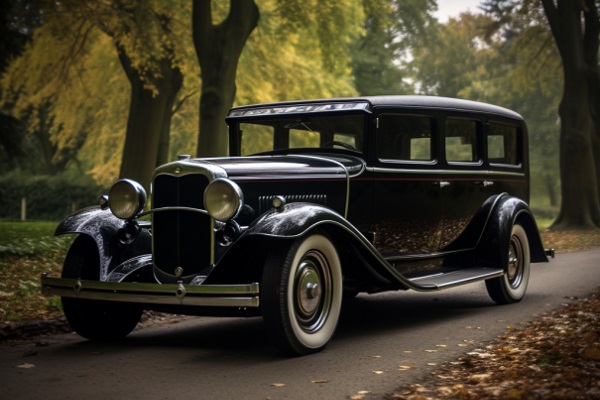
Like all funeral costs, the prices for funeral cars can vary depending on the level of extravagance you would like.
Even on the lower end of the price scale, you can expect to pay in the hundreds for funeral transport. The average cost for funeral limo hire in 2024 was £431.[1]
Funeral transport may be included in some funeral directors' packages, giving you peace of mind that the funeral transport is taken care of. At Distinct Cremations, all of our cremation funeral services include the collection of your loved one and their transportation to the crematorium on the day of their cremation via private ambulance.
[1] The average amount spent on limo hire in 2024 was £431 (SunLife Cost of Dying Report 2025, sunlife.co.uk/funeral-costs)
Operations Manager at Distinct Cremations
"Our families are at the heart of everything we do and every step of the journey with us is of the utmost importance. We understand first-hand the significance of respectful funeral transport from the collection of the deceased to the transfer to the crematorium.
“Even the smallest acts of kindness can make such a big difference. Our operatives driving our private ambulances across the country have a passion for delivering the highest possible standard of service to our families. Their hard work, dedication and attention to detail really do show in their commitment to providing care to the families we serve.”
Some of the types of funeral cars likely to be more expensive are:
The more elaborate the vehicle that’s included in the funeral package, the higher the overall price you pay is likely to be. If you'd like a more unique vehicle, you may have to book this yourself but you can speak to your funeral provider to see if they can support you.
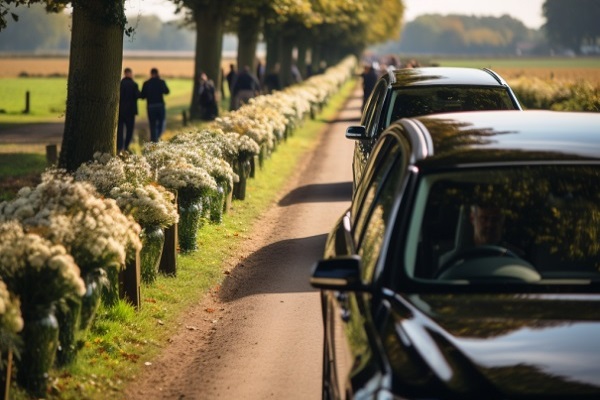
The type of funeral car you choose to transport your loved one can vary widely from the traditional to the unique and may depend on the type of funeral you'd like to arrange.
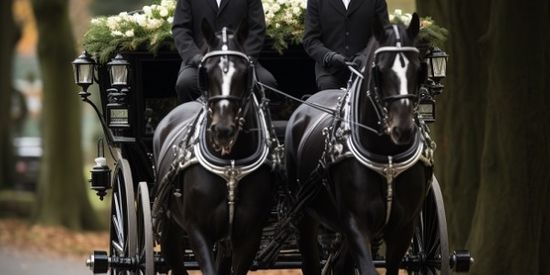

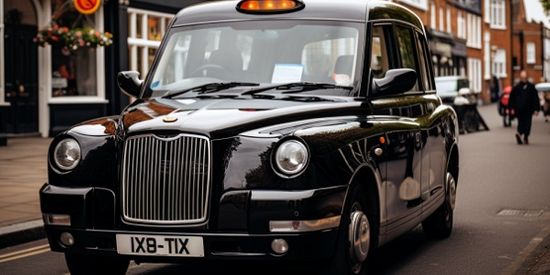

Your loved one may have already laid out their funeral wishes and included instructions about the funeral car. Sharing funeral wishes with those closest to you is the best way to make sure your funeral preferences are known and respected.
If hiring a funeral car or hearse is too expensive or you’d like to prioritise the money elsewhere, there are two ways to do so.
If you’d like to arrange a funeral that prioritises care whilst keeping arrangements affordable, find out more about our cremation services.
Whether a loved one has died or you're anticipating a death, our team is available to talk you through each stage of the funeral arrangements and support you in arranging a respectful attended or unattended cremation.
With a funeral plan you can relax knowing a funeral is agreed and paid for in advance. Plan your own funeral or make arrangements for someone else.
Some people choose to forgo the funeral transport costs and use the money elsewhere. 11% of people in 2024 chose not to use a hearse or limo.[2]
Many people would rather money from their estate go to their loved one, rather than towards formal and extravagant funeral arrangements.
[2] 11% of people in 2024 didn't use a hearse or limo (SunLife Cost of Dying Report 2025, sunlife.co.uk/funeral-costs)
Traditionally, the first funeral car carries the coffin, followed by a car or cars for immediate family members. The conventional colour for these vehicles is black. However, you can arrange respectful and appropriate funeral transport that doesn’t follow these customs.
If you do want to follow tradition, this is what to expect from a funeral procession (which is otherwise known as a funeral cortege).
The funeral procession begins at the funeral home or the home of the deceased wherever they are resting.
The funeral directors walk in front of the hearse for a short distance at the beginning and the end of the journey.
The funeral cars proceed slowly as a mark of respect and so that all of the vehicles can stay together.
If you encounter a funeral procession whilst driving or walking, there are several ways to behave respectfully.
As an additional mark of respect, you can bow your head as a funeral procession passes.
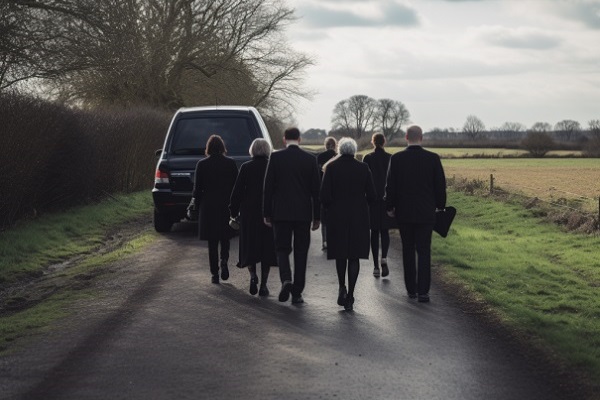
Still have questions about funeral cars? Reading these other frequently asked questions may help you make your funeral transport choices.
The first funeral car in the procession usually contains the coffin and the funeral directors. The funeral car following behind for mourners usually transports those closest to the deceased. This may be the spouse or significant other of the deceased as well as their immediate family members or closest friends. These people may be referred to as the chief mourners.
The room for passengers in a funeral car depends on the size. The car is traditionally chauffeured so at least one space will be taken up by the driver. Between 3 to 6 mourners fit in standard vehicles. You’ll need to consider the mobility of the chief mourners too and make arrangements if any of them are in wheelchairs or have other physical limitations.
The role of the hearse is to carry the coffin so it will make the journey to the funeral service and the burial/cremation location if they are in two different places. You can discuss with your funeral director whether you’d like the funeral car carrying mourners to transfer them to the wake or back home.
When the funeral cars arrive at the crematorium or burial ground there may be a procession where mourners walk slowly behind the hearse containing the coffin. This is a mark of respect towards the deceased and allows people to join their loved one on their final journey.
Arranging a funeral car is one aspect of planning a funeral service but there are several other key decisions to consider.
If you are feeling overwhelmed with funeral planning, our compassionate team can help you arrange a straightforward funeral without the elaborate extras. Give us a call on 01543 212000 to arrange an attended or direct cremation.

Simplify your funeral arrangements with support from our experienced team at every stage.
Arrange a funeral
Writing a meaningful obituary allows you and your family to reflect back on your loved one’s life and achievements.
How to write an obituary
A funeral celebrant will learn about your loved one and offer their experience to officiate a personal funeral service.
View our funeral celebrant guideWe offer the highest level of support, but don't just take our word for it. Below are recent reviews from customers who bought a funeral with us.





